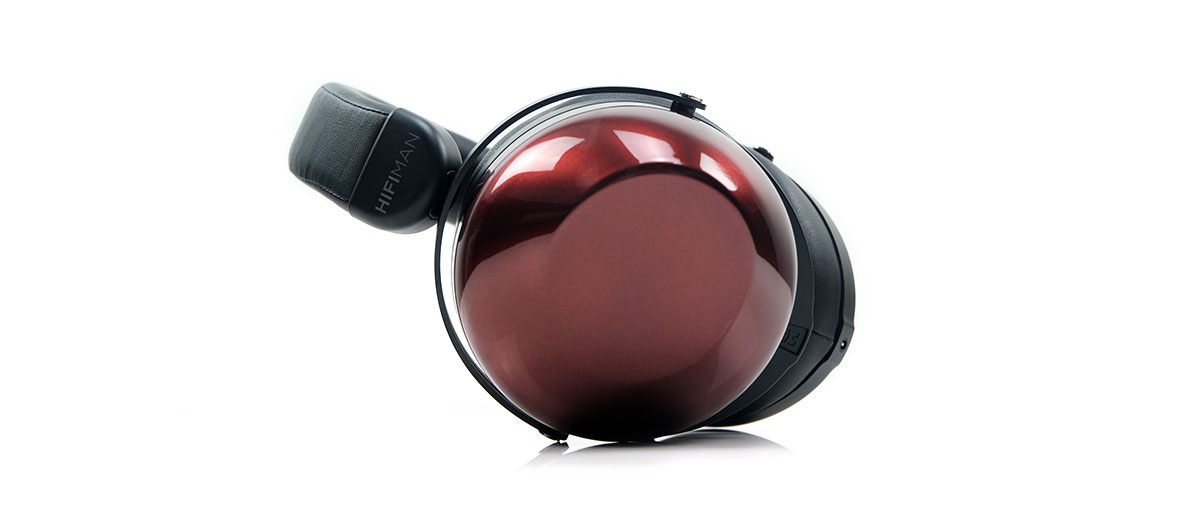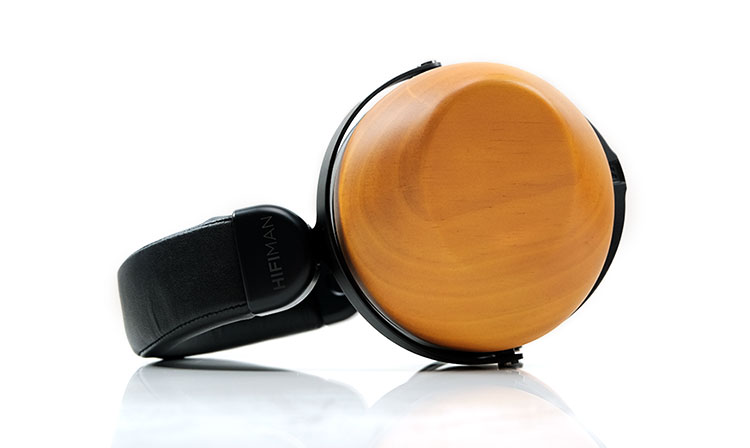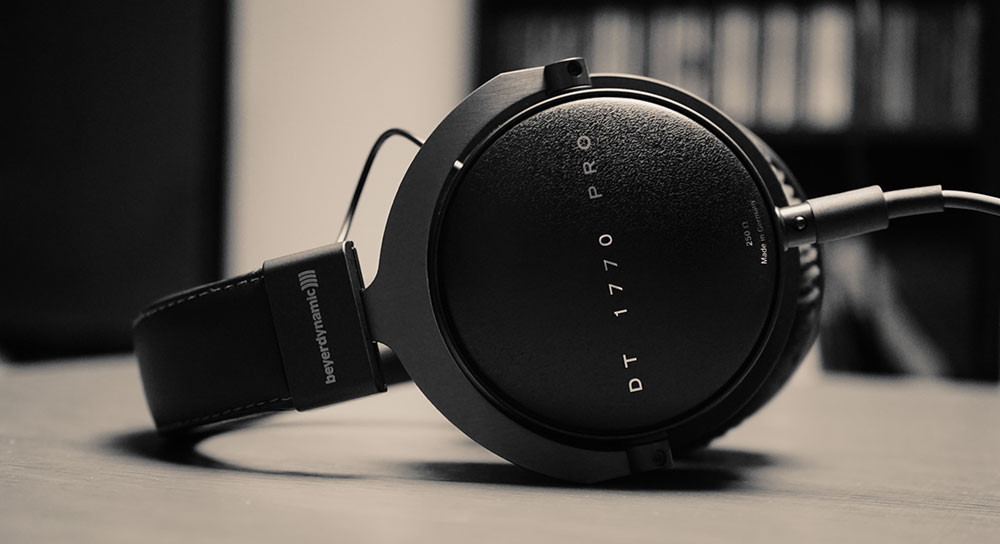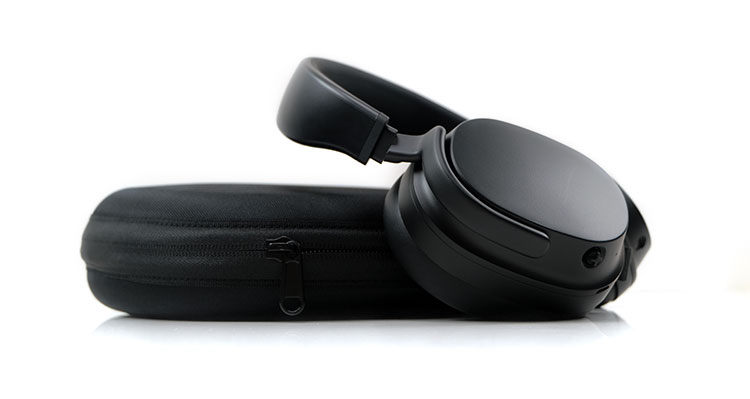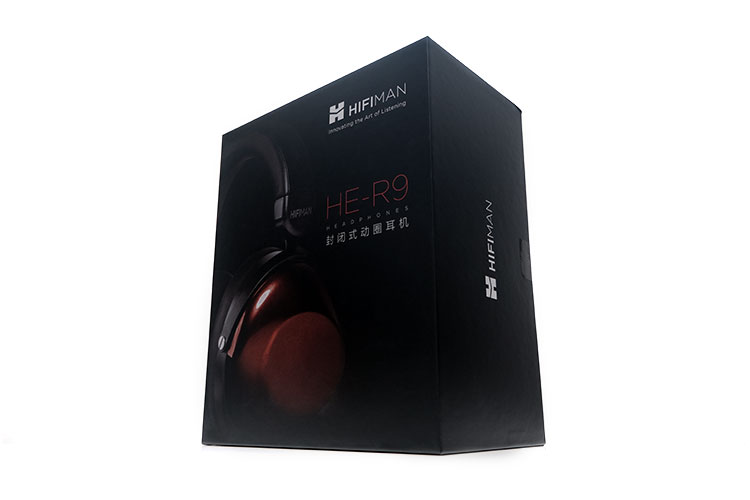Select Comparisons
HIFIMAN HE-R10D
This was the first R Series headphone to use the new topology-designed dynamic driver. For can read our full review of the HE-R10D released last year here.
$1299 (Currently $899)
Technical
We have already spoken a lot about the R10D on page 1 and yes indeed, the HE-R9 does share a lot of commonality with its bigger sibling.
The driver is more or less the same 50mm dynamic version with rare earth N52 magnets around the voice coil. However, where we believe HIFIMAN has changed up the HE-R9 version is via the Topology patterning on the diaphragm to tweak or differentiate the tuning.
No doubt the different cup materials will also produce different acoustical environments for both headphones though there is no clear insight as to what difference there is in the internal damping layouts of either headphone.
The bulbous cup shaping, however, operates on the same principle for both the R10D and the HE-R9 in creating more room to breathe and giving both drivers plenty of space to sound as open as possible.
Both headphones are equipped to handle the new Bluemini R2R though originally the R10D was reviewed with the non-R2R Version last year. The last technical switch-up is the ability to use dual-entry and single-entry wired connections on the HE-R9 compared to just single-ended with the R10D.
Design
The exact same form factor but due to some of the different materials used the overall level of isolation and the aesthetics are different. The change is subtle for the level of isolation and dramatic for the aesthetics.
The big aesthetical difference is the use of a more premium light-grain wood variant for the R10D cups and slightly cheaper plastic materials for the HE-R9 cups. I would take the wood grain over the plastics as they feel a bit sturdier and thicker.
However, I do like that Fostex-style dash of dark reflective red on the HE-R9 cups. They stand out and look good to the eye.
More nuanced differences look to be more in the choice of pleather for the headband which seems a slightly cheaper quality compared to the R10D pleather. The high level of comfort from both though seems relatively unchanged with the 9g weight reduction from the R10D barely noticeable when trying both on.
That improved isolation I am presuming is from the use of less porous plastic materials for the cups compared to wood. Clamping is the same, relatively relaxed, and sweat-free from the hybrid pads.
Cables choices are more restrictive for the HE-R9 with no balanced option, just a shorter but nicely finished 3.5mm TRS terminated rubbery black dual-entry cable.
Performance
Very different-sounding headphones here. The R10D is the brighter and airier of the two headphones with less low-end warmth and sub-bass presence but in return, you will perceive this to be a superior presentation for micro-detail and general levels of clarity, especially through the upper mids and highs.
The HE-R9 is the warmer of the two headphones. It has a comparatively raised bass shelf, a more fulsome and even-harmonic bias to instrumental coloration but also a relaxed and soft sounding upper-mids and treble tuning.
Of the two, the HE-R9 is the more forgiving for vocal delivery with enhanced euphony and a stronger bass fundamental underpinning bass and lower midrange instrumental strikes. What it lacks is that R10D treble presence and extension that injects a bit more bite and accuracy into the upper mids percussion and higher frequency spatial cues.
As a result, the HE-R9 might sound a bit more intimate, perhaps more of a focus on the mids and bass than the highs whereas the R10D will push your ear more to the upper mids and highs.
I am not convinced vocal imaging has changed that much between these two but the fuller vocal sound of the HE-R9 might end up being perceived as being more forward-sounding.
If you want greater accuracy in terms of detail retrieval and tonal balance the R10D is probably the right choice here. However, if you want something weightier and fuller sounding with richer vocals then the HE-R9 is more suitable.
beyerdynamic DT 1770 PRO
$549
Technical
Both headphones are full-sized circumaural dynamic driver designs though the driver choices are very much proprietary driven.
The DT 1770 PRO uses beyerdynamic’s in-house designed 45mm Tesla driver which offers a very high magnetic flux density of over 1 Tesla, (unit of measurement) and a sandwich-type membrane for the diaphragm.
This off-angled driver has been a staple in all of beyerdynamic’s high-end designs for over a decade now. The sample we have here is their 2nd gen version with the 3rd version found in units such as the T5 coming out in 2020.
The HE-R9 uses a slightly larger 50mm dynamic driver with the magnetic field controlled by N52 rare earth magnets. The diaphragm is coated with HIFIMAN Topology nanotech technology that allows them to fine-tune the sound signature. Hence a factor in offering similar drivers to the R10D but with a different tuning.
The ratings of both headphones are very different. The DT 1770 PRO is a studio pro headphone and you will need an amplifier that can cope with its high 250Ω rating to drive it properly.
The HE-R9 is much more portable-friendly with a 32Ω impedance rating. Volume control should not be an issue with either, however, with the HE-R9 at 100dB and the DT 1170 PRO at 102dB SPL.
Design
Gosh, the design approaches of these headphones could not be more different. In short, the DT 1779 Pro has much better build quality but the HE-R9 has a flashier and more topical visual appeal.
Given that the DT 1770 PRO is pitched to the studio professional the emphasis on robustness makes sense. The aesthetic is quite utilitarian or industrial looking but that’s always been beyerdynamic’s approach for its studio or DT range so it is in keeping with tradition.
Despite the different approaches, I found the comfort levels of the HE-R9 to be somewhat better for casual listening and the DT 1770 PRO superior in terms of secure fitting.
The clamp is tighter on the beyerdynamic and it does have around 50g more weight but on the plus side, it does isolate better, even with its velour pads. With the leather pads, the isolation is even higher.
The DT 1770 PRO is purely single-ended with a 3-pin mini-XLR connection though it does come with two types of cables, a coiled pro version, and a straight rubber tubed option. Both cables are terminated with a 3.5mm TRS and include a single 6.35mm adaptor much like the stock HE-R9 cable.
Of course, you have the option to go single or dual-entry or even wireless with the HE-R9 using the Bluemini R2R so there is a bit more flexibility but it’s hardly likely you want wireless in a studio setting.
Performance
The DT 1770 PRO is a studio professional headphone with some quirks that suit mixing as opposed to an audiophile who just wants to listen to music. The HE-R9 is just about relaxing and enjoying the music and seems tuned to maximize that vibe.
The beyer is about emphasis at both ends though it is not v-shaped. Rather it’s got this raised bass shelf from 20-100Hz then a very abrupt cut from 200-300Hz where it stays very neutral to around 5-6k. From there it starts rising again and peaks around 8-9k with some secondary energy beyond.
That low-end shelf and cut are primarily for mixing purposes allowing pros to get a grip on thinning the bass out and making room for the all-important kick drum channel for mixing with excellent sub-100Hz clarity and separation.
For pure listening, it means a high degree of bass to mids separation and a midrange that is clean sounding but thinned out with only a mild bump at 1-2k for presence.
The HE-R9 has no such dip. I would argue the DT 1770 Pro bass is more controlled with better damping to produce a tighter delivery but it still lacks the heft and warmth of the HE-R9 response. A bass head will likely gravitate to the HE-R9 but it’s not as precise or as separated so a studio pro would want.
The HE-R9 mids are more prominent, smoother, and richer sounding. I tend to prefer the HIFIMAN tuning here for listening to R’n’B and sparser mixes. There is a bit more character and agreeability in the voicing.
The DT 1770 Pro does have better mids to treble spacing and clarity when tracks get busier as well as a bit more bite from its stronger treble extension and presence.
Drop + THX Panda Wireless
$399
We never reviewed the Panda before but it has been doing the rounds in our office for well over a year now. This one is on our comparison radar due to the recent price drop of the HE-R9 and its wired and wireless capability.
Technical
Both headphones are closed-backs with wireless capability, however, that’s about where the shared characteristics end. Drawn from the older Oppo PM-3 legacy the Panda has a supraaural form factor with a 55m planar driver and I presume a similar FEM-Optimized Magnet System from the Oppo legacy implementation.
The HE-R9 is a circumaural larger form factor using a 50mm dynamic driver with a HIFIMAN Topology nanotech patterned diaphragm construction and N52 rare earth magnets around the voice coil.
There are also some substantially different approaches to how both headphones handle wireless. Essentially the HE-R9 is a wired headphone that is compatible with HIFIMAN’s Bluemini wireless whereas the Panda’s wireless and wired are fully integrated into the cups complete with the control system.
Decoding-wise, the options are quite similar with the Panda capable of up to LDAC and including aptX HD and aptX Adaptive. The Bluemini R2R is capable of all the aforementioned codecs aside from aptX Adaptive. Both can deliver 24BIT/96K rates wirelessly. Both offer Bluetooth 5.0 via a Qualcomm QCC5124 chipset.
Amplification topology is very different with the Panda going for the very solid-state THX technology and the Bluemini R2R going more analog with its resistor-based HIMALAYA chipset.
Going wired there is little to separate these two with the Panda rated at 26Ω and the HE-R9 rated at 32Ω and both rated at 100dB SPL.
Design
The Panda is the smaller and more discreet form factor and on balance offers slightly sturdier and better build materials. It can also articulate to fold flat and fit into a nice and handy carry case making it the more portable of the two headphones.
However, this is a planar on-ear headphone and loses out to the HE-R9 in terms of weight and comfort. The Panda weighs in at 375g, a good 47g more than the HE-R9, and has a tighter clamp and a bit more vertical pressure hot-spotting on the top of your head.
The pressure balance of the HE-R9 is better with a slightly looser clamping force so you can wear it for longer without fatigue. However, the hybrid pads are more porous so not the ideal headphone for careful listening if there is heavy background noise.
The huge form factor and lack of a carrying case do make the HE-R9 far less portable and it is not exactly discreet with those huge cups, especially with the Bluemini R2R module added on.
The Panda uses a single-sided cable entry system whereas the HE-R9 offers more flexibility with both single and dual-entry options.
The HE-R9 cable is a little beefier though both aesthetically are similar with their black rubbery finishes. You do not get a 6.35mm adaptor with the Panda stock cable but you do get a USB-C cable which seems to be missing with the Bluemini R2R.
Performance
We decided to compare them both using their Bluetooth option rather than wired, primarily to get an insight into the new Bluemini R2R capability when combined with the HE-R9.
I have to say, this is a competitive matchup though the tuning is very different. The Panda is brighter but the staging is comparatively intimate, as you might expect with a flatter and smaller cup. The HE-R9 is warmer but with a more expansive staging quality giving you a quasi-arena-type seated position in relation to the main stage.
However, the mids on the HE-R9 with the Bluemini R2R sound a lot more dipped and further back in the mix. Particularly so for male rock or chest vocals, less so for head or higher pitching female vocals. Treble is also appreciably mild in comparison to the Panda.
The Panda mids imaging is a lot stronger with vocals positioned further forward and quite clear sounding. Upper mids percussion timbre and energy also benefit from an injection of bite from a stronger level of lower-treble presence.
The HE-R9/Bluemini R2R mids are a lot softer and smoother and with a more rounded timbral coloration from that relaxed upper mids and treble. It does lack a little comparative air in BT mode, most notably in the lower mids which tend to be drowned out a bit from the upper bass bloom.
If you want body and bass then the HE-R9 has the edge in terms of sheer mass and weight. It is ideal for modern R’n’B. The Panda bass response is more moderate but still quite lively with a more typical planar bass sound and with less bloom beyond 100Hz. I would pick the Panda more for classic rock and indie.
Our Verdict
The HIFIMAN HE-R9 is by far the most consumer-orientated headphones released by the company to date. This is not an analytical audiophile offering but rather more of a ‘let your hair down’ frenzy of rich and powerful bass and a smooth euphonic vocal delivery to go alongside it.
You cannot reference using this headphone, it is neither studio pro orientated nor heavy enough on the micro-detail or harmonic accuracy for that kind of studied listening. This is about relaxing casual fun with some audiophile sensibility thrown in. As such it’s a perfect headphone for long listening sessions to R’n’B and modern pop.
It looks great also, no denying the aesthetics and the ‘Fostex red’ will attract many a casual eye though I still have some quibbles on the overall quality of the materials used. Comfort levels are excellent, however. It’s light enough and balanced enough pressure-wise not to distract.
One final note, this is an easy-to-drive headphone but do not be fooled by the numbers. It does sound better with a good-quality solid-state headphone amplifier. Nothing outrageously expensive is required but if you want more rumble and less bloat do not underpower it.
HIFIMAN HE-R9 Specifications
- Frequency Response: 15Hz-35Hz
- Impedance: 32 ohm
- Sensitivity: 100dB
- Weight 328g

